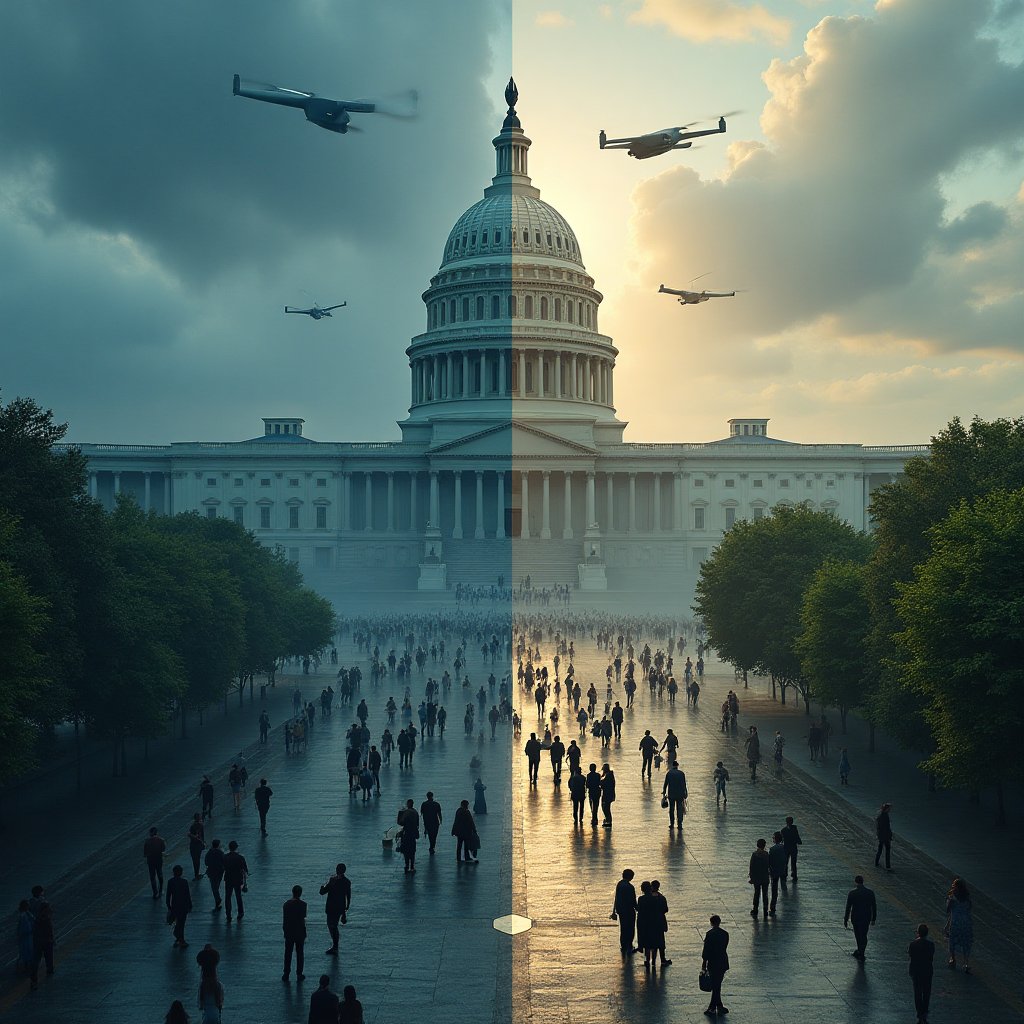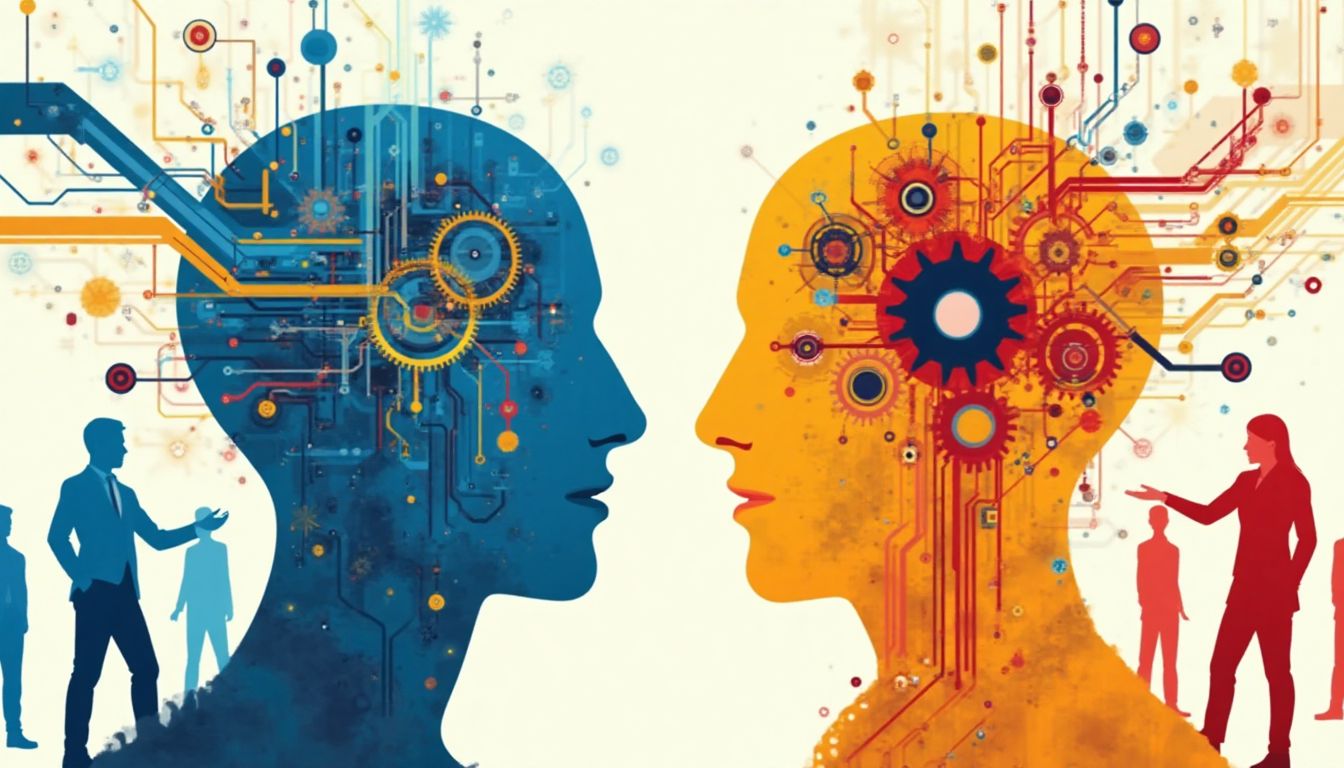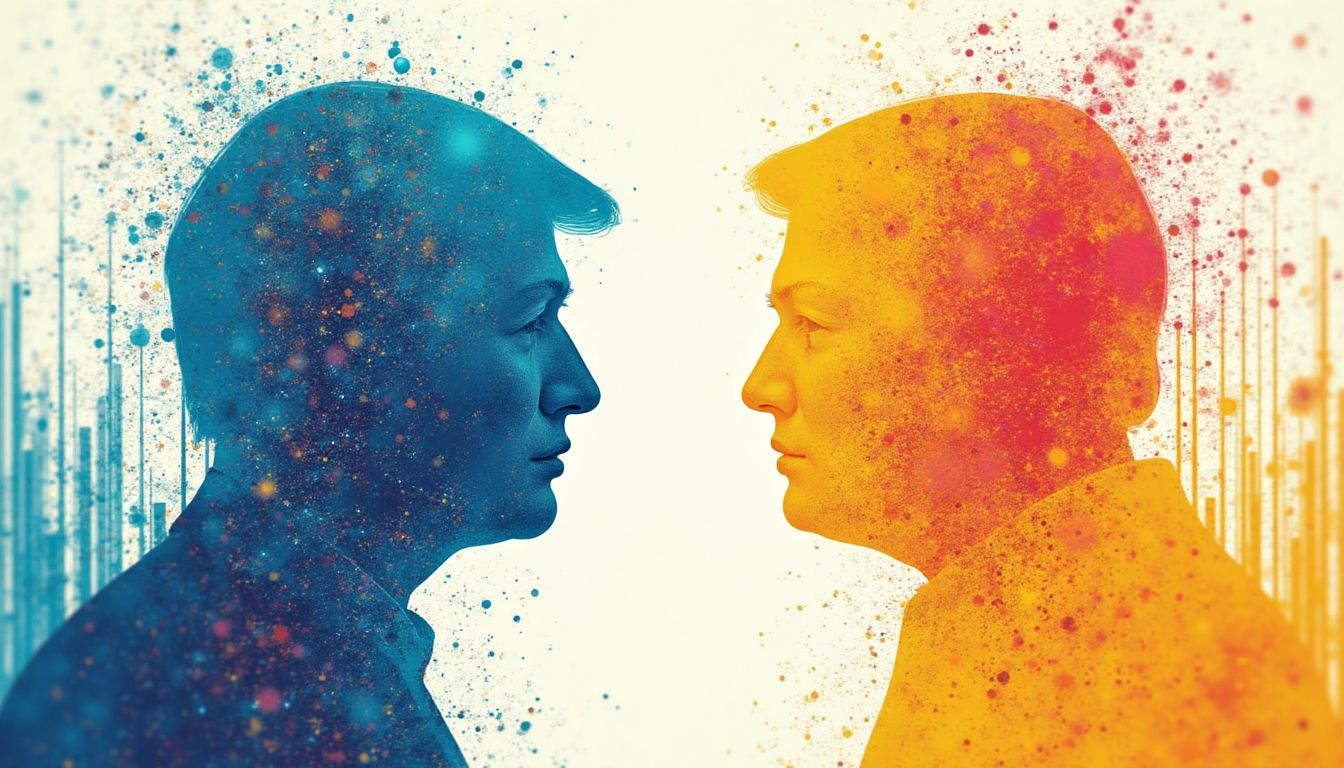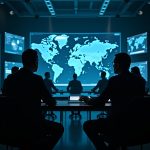Introduction: The Battle of Governing Titans
The greatest danger in times of turbulence is not the turbulence; it is to act with yesterday's logic. - Peter Drucker
When Peter Drucker penned these words, he may not have envisioned the AI-driven age we find ourselves in. Yet, his wisdom echoes loudly today. In a world where artificial intelligence is revolutionizing everything from healthcare to your home thermostat, how do different political systems—specifically autocracies versus democracies—adapt? Will a single, mighty leader adeptly steer the AI ship, or is the collective wisdom of the people a more trustworthy captain?
There's no denying it: AI is not just a trend; it's a force of nature, weaving itself into the very fabric of governance. With autocracies leveraging AI through a swift and singular decision-making process and democracies adding layers of public discourse and ethical debate, the real question emerges: which system truly thrives in this high-tech era? Writers such as Yuval Noah Harari, Nick Bostrom, and Shoshana Zuboff have extensively explored these dilemmas, dissecting how emerging technologies interplay with societal norms and governance.
As you read on, we'll unravel these intricate threads, examining the essence of who holds the reins when AI takes center stage. Are we prepared for what lies on the horizon, or are we simply blowing bubbles in a sea of ever-changing waves?
The Nature of Decision-Making in Autocracies and Democracies
Why is decision-making such a hot topic in the age of AI? Well, imagine this: you’re in a rowboat, navigating a turbulent stream. Autocracies and democracies each represent a different set of oars. Do we want one all-powerful oar steering our course, or does every citizen have a say in the rowing direction?
Centralized vs. Decentralized Decision-Making
Autocracies thrive on centralized power. Think of it as a tightly knit orchestra led by an all-knowing conductor, whose baton determines the symphony's tempo and key change in a blink. China, for instance, is known for its rapid deployment of AI initiatives without the bureaucratic hurdles deterring progress. Decisions can be made and implemented swiftly, allowing for a nimble response to technological advancements. The centralized nature, however, can stifle dissent and innovation from the grassroots.
In contrast, democracies are akin to a jazz band. There’s room for improvisation and freedom, with each player contributing their unique flair. Policies undergo rounds of debates, public hearings, and consultations, ensuring diverse viewpoints play a pivotal role. In the United States, legislation like AI ethical standards often encounters extensive discussion, adding layers of time but ensuring decisions reflect the broader social tapestry.
Responsiveness and Accountability
Accountability is at the heart of the democracy machine. Citizens can vote out leaders or influence policy through advocacy and grassroots movements—see how privacy concerns surrounding AI surveillance sparked extensive public discourse and regulation in the European Union. In contrast, autocracies may suppress public critique, but their streamlined decision-making allows them to respond faster to immediate needs, like Singapore's deployment of AI in public health monitoring during the pandemic.
Yet, transparency often comes second to efficiency in authoritarian setups. These environments risk power being unchecked, as information bottlenecks limit public consciousness. As such, the balance between quick action and comprehensive deliberation remains precarious.
AI's Impact on Government Efficiency and Power Concentration
Welcome to a techno-rollercoaster where artificial intelligence (AI) zooms into the world of government efficiency faster than you can say "algorithm." But, as we power up, we can't ignore the elephant in the room—will AI result in power overload for some, leaving others in the dark? It's time to strap in and dissect how AI can turbocharge government functionality and reveal the risks lurking in the shadows.
Enhancements in State Functionality
AI-powered solutions are like the trusty sidekick every superhero— or politician—dreams of. When done right, it can be Bruce Wayne to Commissioner Gordon, offering swift solutions to civic challenges. Whether crunching big data to predict traffic jams, optimizing public transportation schedules in bustling metropolises like New York City, or streamlining healthcare delivery, AI has been busy sending laser-like focus beams to make government faster and cheaper. Case studies abound like wildflowers in the meadow. Think of India employing AI to streamline water distribution or Estonia, the digital wunderkind, integrating AI to digitize public services. The results are as refreshing as lemonade on a summer day. Governments that dance with AI escape bureaucratic snares and emerge as sleek innovation-clad machines.
Risks of Authoritarian Control through AI
But (cue ominous music), there’s a darker twist to this narrative. AI's capabilities, when wielded like Darth Vader's lightsaber by centralized regimes, can amplify power to jaw-dropping dimensions. Authoritarian governments may use AI to squash pesky dissent faster than you can say "freedom of speech." Facial recognition technology, for instance, keeps a watchful eye that's rarer than a YouTube cat video slipping through unnoticed. Hello, Big Brother! These AI technologies trigger concerns about privacy erosion or restrictions on liberties. The question looms large: can governments ensure the dual-edge blade of AI doesn't skew from national security to Orwellian overreach?
Surveillance and Control: A Double-Edged Sword
When it comes to AI-driven surveillance, the act of observation becomes a magical, albeit discerning, creature—half savior, half villain. Will it liberate citizens with enhanced safety nets, or lock society in an invisible cage? Join the debate where AI plays the lead role in the ultimate spy thriller!
Surveillance Capabilities and Implementation
AI has unleashed a surveillance revolution, effectively lighting up our surroundings like the Times Square Ball on New Year’s Eve. From China embracing its full potential with nationwide CCTV coverage to a less grandiose but equally dedicated Sweden utilizing AI to combat cyber threats, AI is making a name for itself as the omnipresent guardian. It's quick, thorough, and often doesn't take a day off. But the flipside being, well... unsettling. Its glow might soothe yet has shadows waiting to pounce at ethical boundaries, extracting every byte of your private life.
Civil Liberties vs. National Security
Given the superpowers of AI-enabled surveillance, a battle is afoot! A warrior dance between nurturing civil liberties and flicking the switch toward national security rages on. While governments splash AI into their security playbooks, the notion of privacy faces precarious sliding doors. Public discussions sprout debates on whether surveillance will protect us from threats or unleash an unregulated reality show, uninvited. Taking a stand influences policies leaning on data wisdom without shredding eternal principles of freedom. Can menacing intrusions meet enlightened solutions, or will AI transpose heads on spikes to zeroes in databases? Grab a snack, perch at the edge and stay tuned!
The Role of Innovation and Technological Adaptability
In our rapidly advancing technological landscape, different political systems face unique challenges and opportunities when it comes to fostering AI innovation. Both autocratic systems and democratic systems have strengths and weaknesses that influence how they adapt to cutting-edge technologies and encourage innovation.
Autocratic Systems and Rapid Innovation
Autocratic regimes often capitalize on their power to rapidly implement and deploy AI technologies. This ability to act swiftly, free from the constraints of bureaucratic hurdles, permits them to drive innovation forward with remarkable speed. A prime example is China, which has made significant strides in AI development, largely due to its government's strategic investments and centralized decision-making processes.
However, this swift adoption can come with trade-offs. While autocracies can quickly advance AI initiatives, the absence of rigorous public scrutiny and debate can lead to ethical oversights and a lack of transparency. Moreover, the concentration of power might stifle creativity, as dissenting voices and alternative approaches are often not welcomed.
Democratic Systems and Participatory Innovation
Democracies, in contrast, often prioritize public involvement and ethical considerations, creating a nurturing environment for participatory innovation. While this can slow down the pace of technological adoption, it tends to result in more sustainable and ethically sound advancements. The engagement of diverse stakeholders can lead to robust AI policies that consider a wide range of perspectives and potential implications.
Take the European Union, for instance. The EU's focus on regulations such as the General Data Protection Regulation (GDPR) ensures that AI development aligns with human rights and data privacy standards. This democratic approach values transparency and accountability, laying the foundation for trust between governments and citizens.
The Public's Role in Shaping AI Policies
The extent to which the public can influence AI policy significantly varies between autocracies and democracies. Citizen involvement is critical in shaping ethical standards and ensuring the responsible deployment of AI technologies.
Citizen Engagement in AI Governance
In democratic systems, public opinion is pivotal in steering AI policies and regulations. Through mechanisms like public hearings, consultations, and advocacy, citizens can actively shape the direction of AI advancements. This participatory approach not only ensures accountability but also aligns technological progress with societal values.
A noteworthy example is the participatory governance model employed in Canada. Here, citizens have a say in the ethical considerations of AI applications, fostering a culture of transparency and trust. Engaging the public in decision-making processes not only enhances the legitimacy of AI policies but also empowers individuals to influence the technologies that will shape their futures.
Limited Public Input in Autocratic States
Conversely, in autocratic regimes, public input into AI policy is often restricted, resulting in a disconnect between technology deployment and the needs of the populace. With decision-making monopolized by a select few, AI applications may not always reflect the broader societal and ethical concerns.
For instance, in some autocratic governments, the use of AI for invasive surveillance and control has sparked global criticism due to a lack of public oversight. This absence of citizen engagement leaves crucial ethical dilemmas unaddressed, raising concerns about privacy and individual rights.
- Public Oversight: Minimal levels, leading to decisions made without broad input.
- Ethical Concerns: AI applications may prioritize control over individual freedoms.
- Policy Alignment: Often aligns more with regime interests than public welfare.
AI Solutions: Navigating the Future of Governance
As we stand at the crossroads of governance and technology, the question looms large: how can artificial intelligence be harnessed to balance the strengths and weaknesses of both autocracies and democracies? Envisioning a potential pathway requires innovative thinking and a keen sense of the inherent challenges. One promising avenue is the development of adaptive governance systems that leverage AI technology to assist in real-time policymaking, ensure transparency, and foster an informed electorate. This model aims to combine the efficiency of data-driven decision-making typical in autocracies with the accountability and public involvement characteristic of democracies.
Imagine a world where AI can not only analyze vast amounts of data but also help craft solutions for policy development, taking into consideration the voices of the populace. Here's a step-by-step roadmap to bring these ideas to life, spanning from Day 1 to Year 2:
- Day 1: Initiate the project by gathering key stakeholders including scientists, technology companies, and civic organizations to outline a collaborative vision for AI governance.
- Day 2: Form a dedicated working group that includes data scientists, ethical advisors, and policymakers to draft an initial framework for citizen engagement and AI policy assessment.
- Day 3: Launch a public outreach campaign to establish a transparent consultation portal. This will ensure the public can provide feedback on foundational AI governance concepts. Utilize platforms like SurveyMonkey for streamlined data collection.
- Week 1: Conduct surveys to gauge public sentiment on potential AI applications in governance. Encourage participation across demographics through social media to get a broad perspective.
- Week 2: Analyze feedback collected and iterate on the governance framework design using tools like Tableau for dynamic data visualization.
- Week 3: Present the revised governance frameworks to public stakeholders for further insights. Engage local community centers and organizations to ensure diverse representation.
- Month 1: Pilot new AI systems for public service optimization in specific regions. Collaborate with local government and tech companies like IBM to leverage their AI expertise.
- Month 2: Collect data and analyze pilot program outcomes. Refine AI applications based on results and solicit additional public feedback.
- Month 3: Scale successful pilot programs nationwide. Create a network for public monitoring and feedback on AI implementations.
- Year 1: Conduct comprehensive evaluations on nationwide implementation. Utilize frameworks from institutions like Brookings Institution to assess performance metrics and areas for improvement.
- Year 1.5: Develop advanced AI features for civic engagement, such as real-time policy feedback loops that continuously allow citizens to express their concerns and suggestions.
- Year 2: Establish a robust network of AI-assisted governance models. Continuously adapt these frameworks to resonate with the evolving public needs and emerging technologies, ensuring that AI becomes a bridge for collaboration rather than a wall of separation.
Conclusion: Bridging Governance through AI
As we charge forward into a world increasingly defined by artificial intelligence, the debate surrounding the ideal political system to harness this technology intensifies. Autocracies may tout remarkable efficiency in decision-making, often utilizing AI to streamline operations. Yet, this efficiency often comes with a heavy cost—personal freedoms and ethical governance take a backseat. In contrast, democracies, while occasionally slower to adapt, remain focused on engaging the public and prioritizing ethical considerations crucial for sustainable advancement.
Our challenge lies not in selecting one system over the other, but in finding innovative methods to merge the strengths of both. The nexus of inclusive innovation, public engagement, and rapid implementation presents an exciting frontier. By employing AI solutions responsibly, we can create adaptive governance models that resonate with and serve all citizens, ensuring technology empowers rather than oppresses. The journey may be bumpy, but with transparency, collaboration, and foresight, we can forge a future where AI not only enhances governance but also uplifts human dignity and freedom. What can we do today to begin this exciting transformation? The answers lie in our collective actions and dreams for tomorrow.
FAQ
Q: What is the main difference between autocracy and democracy in governance?
A: The biggest difference is who has the power. In an autocracy, one person or a small group makes all the decisions. In a democracy, power is shared among many people. Citizens have a say in how things are run by voting for their leaders.
Q: Can AI be a tool for both systems?
A: Yes, AI can help in both autocratic and democratic systems. It can make processes faster and improve decision-making. However, how AI is used and its effects on people can be very different depending on the system. For example, in a democracy like the United States, there are rules that protect citizens’ rights and ensure fairness. On the other side, in autocratic countries, AI might be used to control people rather than help them.
Q: How can citizens influence AI policy in a democracy?
A: Citizens can express their opinions, participate in discussions, and take part in public consultations. This is their chance to tell decision-makers what they think about how AI should be used. They can also join organizations or advocacy groups that focus on AI policy to make a stronger voice.
Q: What are the risks of AI in governance?
- Surveillance Risks: AI can be used to watch people, which might take away privacy.
- Algorithmic Bias: AI can sometimes make unfair decisions because it learns from biased data.
- Lack of Transparency: A lot of AI decisions are like black boxes; we don’t always know how they work.
- Decision-Making Issues: When computers make choices, humans might feel like they don’t have a say.
Q: How does AI in autocracies compare to AI in democracies?
In autocracies, AI can lead to faster decision-making but often lacks public input. This means that while things may happen quickly, they might not reflect what people really want. In democracies, there is more discussion around AI, which can take longer but ensures that the public has a voice. This way, decisions are usually better suited to community needs.
Q: Are there examples of AI helping governments?
Yes! Governments around the world are already using AI to improve services. For example, in the UK, AI is used to help manage traffic and keep public services running smoothly. In Singapore, AI assists with healthcare systems to give patients quicker access to services. However, it's important to remember how these technologies should be balanced with ethical considerations and citizen rights.
Q: What should we be careful about with AI in politics?
We need to be cautious about how AI is used to ensure it helps rather than harms. It's important to have rules that guide how AI works, especially in areas like privacy and civil rights, so that technology empowers people and doesn't limit their freedoms.
Wait! There's more...check out our gripping short story that continues the journey: The Sunstone
Disclaimer: This article may contain affiliate links. If you click on these links and make a purchase, we may receive a commission at no additional cost to you. Our recommendations and reviews are always independent and objective, aiming to provide you with the best information and resources.
Get Exclusive Stories, Photos, Art & Offers - Subscribe Today!





























Post Comment
You must be logged in to post a comment.